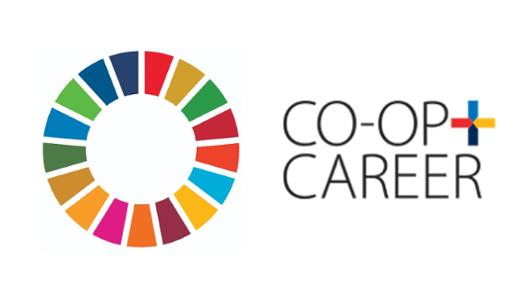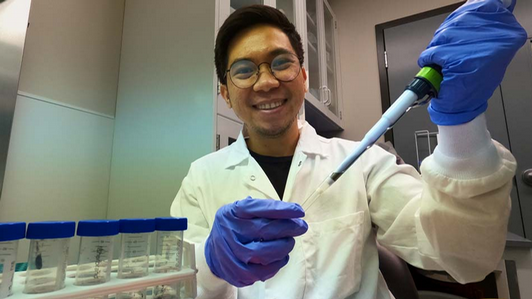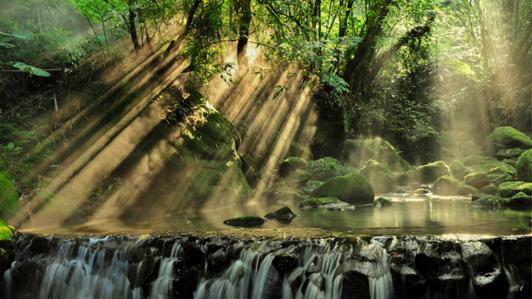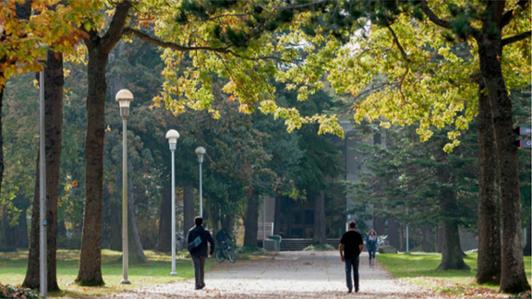Sustainable Development Goal 15
Protect, restore and promote sustainable use of terrestrial ecosystems, sustainably manage forests, combat desertification, and halt and reverse land degradation and halt biodiversity loss
Learn how UVic advanced SDG 15 during 2023
On this page you can get a glimpse of the great work done by the campus community to advance SDG 15 during 2023, centred around the key areas of the university:
Education & student experience

SDG 15 in action at Co-op and Career
Co-op and Career Services offers placements locally and abroad, where students have the opportunity to work in projects that support conservation and sustainable use of terrestrial ecosystems.

Animal law and youth activism
The Animals & Society Research Initiative at the Faculty of Law provides an open-access, scholarly documentary film series on Animal Law, surveying the current field of animal law and policy through the eyes of four youth advocates.

Sustainable Agricultural Systems
Ecological Restoration
The Ecological Restoration programs and courses designed for working professionals, offer a variety of options designed to advance knowledge and skills for restoring disturbed and degraded ecosystems.
Research
FACULTY MEMBERS PUBLISHED ON SDG 15
Scopus/Elsevier 2019-23JOURNAL ARTICLES ON SDG 15
Scopus/Elsevier 2019-23CITATIONS OF SDG 15 RESEARCH
Scopus/Elsevier 2019-23
Indigenous -led biodiversity monitoring
Dr. Louie Lopez has been awarded a prestigious Liber Ero Post-Doctoral Fellowship to conduct Indigenous-led environmental DNA (eDNA) ecosystem monitoring with the Chipewyan Prairie Dene and Cold Lake First Nations.

Wildlife species conservation
Drs. Chris Darimont and Ishana Shukla study the impact of humans and large carnivores activity into the behavior and mortality of mesocarnivores (coyotes, bobcats, wolves and cougars).

Biodiversity research
Animals & Society Research Initiative
The Animals & Society Research Initiative provides an interdisciplinary research hub for all research that promotes critical thinking on interspecies relations, focused on how anthropocentrism and speciesism shape our societies and communities.
Community & campus operations

Field schools on ecological resilience
UVic's environmental studies field schools are hands-on learning in diverse ecosystems, developing practical skills, interdisciplinary knowledge and community engagement for regenerative ecologies and social resilience.

Ecological restoration club
The Ecological Restoration Club collaborates with the Campus Community Garden to build building capacities to restore ecosystems by engaging in regional stewardship initiatives.

Living Lab
Applied Conservation Science Lab
The Raincoast Applied Conservation Science Lab supports social-ecological sustainability that considers nature and the people who rely on it, empowering evidence-based decision-making for environmental policy by all governments.
Policy & policy-making

Campus Plan
The Campus Greenway Landscape Plan and Design Guidelines establishes guiding principles, big ideas and design guidelines that will serve to support and coordinate the implementation of landscape and public realm improvements along the length of the Greenway.

Water standards
UVic´s is committed to preserving the ecological diversity of the natural areas on its campus, embracing water guidelines and standards regulated by the university, the Capital Regional District and municipalities.

Plastic reduction
Waste water
UVic protects the terrestrial lifeforms by implementing a hazardous waste management system, designed to deal with hazardous wastes on campus in an environmentally responsible manner.
Events

